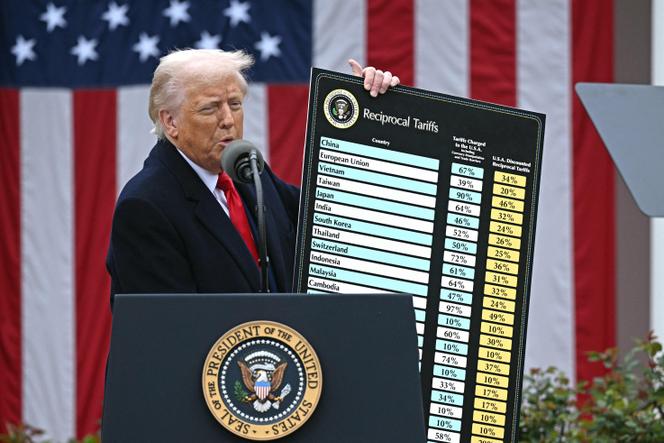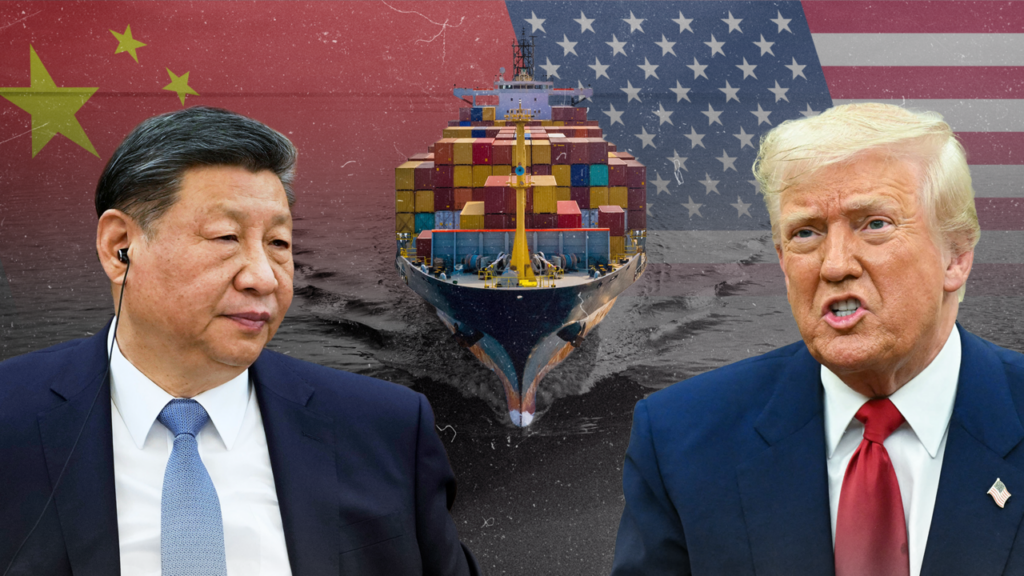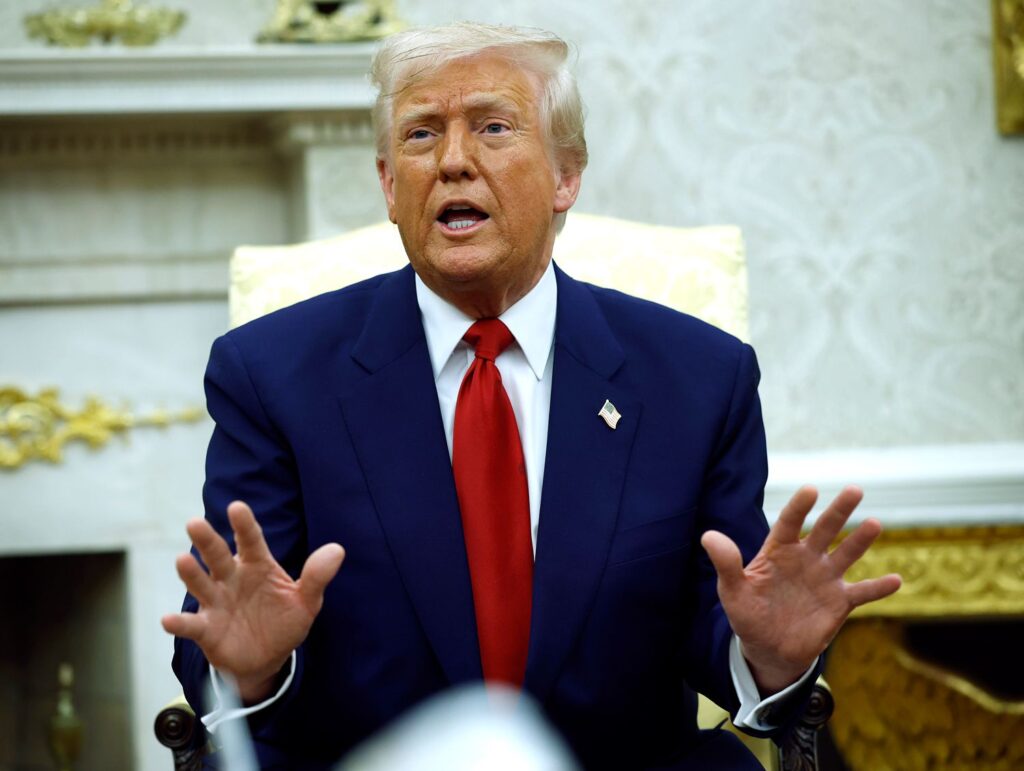Now Reading: Trump’s Shocking 54% China Tariffs Spark Global Trade War Drama
-
01
Trump’s Shocking 54% China Tariffs Spark Global Trade War Drama

Trump’s Shocking 54% China Tariffs Spark Global Trade War Drama
In a dramatic Rose Garden announcement that sent shockwaves through global markets, President Donald Trump has unleashed a staggering 54% tariff on all Chinese imports entering the United States. The bold move, which Trump framed as correcting decades of American trade disadvantage, has instantly triggered a fierce response from Beijing and threatens to completely reshape the economic relationship between the world’s two superpowers.
The economic bombshell represents a radical 34% increase over existing duties, effectively creating a punishing wall of taxation against Chinese goods. Markets tumbled worldwide as businesses scrambled to assess the potential fallout from this latest chapter in Trump’s dramatic rewriting of international trade rules.

China Promises Swift and Severe Retaliation
Beijing wasted no time firing back. In a strongly-worded statement released Thursday morning, China’s Ministry of Commerce condemned Trump’s actions as “typical unilateral bullying practice” and promised decisive countermeasures to protect its economic interests.
“China firmly opposes this and will resolutely take countermeasures to safeguard its own rights and interests,” the ministry declared, setting the stage for what economic analysts fear could become the most dangerous escalation yet in the volatile relationship between the economic giants.
The statement urged Washington to “properly resolve differences with its trading partners through equal dialogue” – language that suggests Beijing sees little room for negotiation under the current terms Trump has established.

Inside Trump’s Radical Trade Revolution
Wednesday’s announcement adds 34% “reciprocal” tariffs on top of the existing 20% duties already hitting Chinese imports. The escalation comes after Trump had previously imposed two separate 10% tariff increases on Chinese goods since returning to the White House in January.
During his hour-long Rose Garden address, Trump projected both respect and confrontation toward his Chinese counterpart. “I have great respect for President Xi Jinping of China, great respect for China, but they were taking tremendous advantage of us,” Trump declared with characteristic bluntness.
In a pointed warning that suggests he’s prepared for an extended economic battle, Trump added, “They understand exactly what’s happening and… they’re going to fight.”
The Broader Global Trade Reset
The China tariffs represent just one piece of Trump’s sweeping trade policy revolution. In the same announcement, he unveiled a blanket 10% tariff on all imports entering the United States, alongside additional country-specific measures that disproportionately target Asian economies.
Economic experts warn these combined actions could fundamentally alter global supply chains, drive inflation, and potentially trigger a cascade of retaliatory measures from trading partners worldwide.

A History of Economic Tensions
Trump’s aggressive stance isn’t entirely new. During his first term, he engaged China in a protracted trade conflict that led to billions in tariffs from both sides. The difference now appears to be the scale and speed of the escalation, with Trump implementing far more dramatic measures just months after returning to office.
Previous tariffs were justified by the administration as necessary to combat the flow of illicit fentanyl from China to American shores. Beijing responded to those earlier measures with targeted retaliatory tariffs on American agricultural products and fuel, alongside action against certain U.S. companies and tightened export controls.
What Happens Next?
Economic analysts are now watching closely for China’s specific countermeasures, which could target key American exports including agriculture, aircraft, and high-tech products. More concerning for global markets is the potential for the conflict to expand beyond tariffs into areas like currency manipulation, investment restrictions, or even geopolitical tensions.
American consumers may soon feel the pinch as importers pass on higher costs for Chinese-made goods ranging from electronics and clothing to furniture and automotive parts. Meanwhile, U.S. farmers and manufacturers who depend on Chinese markets face uncertain futures as retaliatory measures take shape.

As both economic superpowers dig in for what could become a prolonged and costly trade war, the ripple effects will likely be felt throughout the global economy. With neither side appearing willing to back down, businesses and consumers worldwide are bracing for an extended period of economic uncertainty and potential market volatility.
The dramatic escalation comes at a time when both countries face significant domestic economic challenges, raising the stakes of a conflict that threatens to reshape international trade relationships for years to come.











